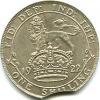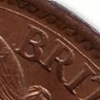|
|
The current range of books. Click the image above to see them on Amazon (printed and Kindle format). More info on coinpublications.com |
|
|
-
Content Count
12,471 -
Joined
-
Last visited
-
Days Won
291
Status Replies posted by Rob
-
Hi Rob.
I don't seem able to join the thread but I have 2 1938 farthings that you are welcome to. Both have remaining lustre. Not many, I know but every little helps.
Bob
-
Dear Rob,
Are you the same Rob that bought some Numismatic Auction catalogues and letters from me at Shepperton Film Studios some while ago?
Apologies if you're not.
-
Rob. Would you let me post a copy of your analysis of the EU question on another forum. It's the most sensible assessment I've read so far.
(It will be the RAF forum where a similar topic is raging!)
-
Rob
You appear to be one of the most knowledgeable forum users so I wonder whether you can steer me to a simply explained description of the milled coin production process from initial design and engraving to production of a master die and working dies, including the production and use of punches (puncheons) through to full production. I'm not sure that I fully understand the details and sequence of the various stages in taking a coin design through to production. I'm particularly interested in this as it applies to Victorian pennies as that's what interests me most and might help me understand how errors and overstrikes occur. I'm trying to work out how the various micro-varieties of F15 pennies (Gouby obverse G types) might have been produced and I need a better understanding of the process before I can develop theories.
Thanks
Richard
-

Hi Richard.
You might be better directing a question to the RM museum and ask them if Graham Dyer would have a look at it when he next visits. Although he is retired he does still come in from time to time, and more importantly he was passionate about the Victorian milled coinage. He will give you a full sequential answer if he can. This is likely to be a very long winded answer!! I guess you could try to be diplomatic, as not addressing the question to the current curator might imply the wrong thing - so maybe a joint address would be preferable.
Because of technological advances, I'm not sure what was introduced at what point in time. There are things I don't know such as when pantographic reduction came into play (I suspect after the mint was refurbished in 1882). It appears from the date spacing that there was a 186 master to which the final (irregularly spaced) digit was added on the die, but that might be a 18 master because I have a 1/2d with 1862 over 26.
I have no idea whether the punches were all made for the new bronze coinage or if they used a combination of existing and new punches. It may also be that the different punches were the products of a number of people. (This is seen on the earlier hammered coins from the Civill War where it is possible to identify individual idiosyncracies from one issue to the next, and their movement around the country can be deduced from this). People being creatures of habit and having different artistic styles would lend itself to a number of small but observable differences. Given the large output, it is possible that more than one master was used due to failure/wear. Again, we would expect small differences. It may be that the drapery differences were due to wear on the master being recut at the matrix stage, or even reinforced on the die. Certainly some of them are rare enough to say that probably only one die was involved.
If we assume that the mint was essentially operating in the same manner as it was at the 1816 recoinage, then there is evidence from some of Pistrucci's trials to say that in the beginning there would be a drawing from which the engraver would start to cut dies and take a periodic impression, which due to the dies being unhardened would usually be done in lead or lead/tin alloy. There is a series of 4 crowns for example in the Paget sale (lot 432) showing the rough outline head with just an ear, laurel added, hair added and finally something approximately complete with legend. I assume that something similar would be done for most issues, but evidence is thin on the ground as any lead impressions would probably be recycled. This would be a prelude to actual production activities and would likely have been repeated many times prior to approval so that a commitee cold make their decision. Therefore, any, some or none of these engravings may survive to the production stage. So you have the initial die as the trial followed by punches following acceptance. As you would expect, letter punches seem to be continually available whereas busts and Britannias would hae to be made. Any master punches could only be made after a decision on the design had been made.
You can find out some background info for the mint in Challis' book. https://books.google.co.uk/books?id=Zz89AAAAIAAJ&pg=PP2&lpg=PP2&dq=History+of+the+Royal+Mint+Challis&source=bl&ots=bGTfOkC8QJ&sig=w7IHcFsrWwToXQCq2AYOs7i5qPg&hl=en&sa=X&ved=0ahUKEwjhx5Lnx6TKAhUHXBQKHQFGCj4Q6AEIPDAE#v=onepage&q=History of the Royal Mint Challis&f=false
This link has an index which will help you decide if it is useful.
The attached shows the basic procedure for making a coin. Although it is pre-recoinage, the basic technique hasn't changed much since the 1600s. As for the punches, it is obvious that several exist for the same object given the different shields, helmets, goundlines etc seen. I assume that these would be made in a similar manner, but I'm not certain.
W Wyon died in 1851, but his copper penny bust punch with WW on the truncation was used until 1858 when the initials disappeared, so that gives an idea of master punch longevity. Things didn't have to be custom made for the new issue.
You also have an 1857 pattern with J(ohn) W(yon) initials, who almost certainly made punches and dies alongside LCW. His shield rim on the signed reverse was like the solid one seen on say 1864 pennies, so there is a distinct difference.
I'm not sure if this helps a great deal, but it's a start. Think laterally and you will get there. Keep all the options open.
Regards
Rob
-
 Coinpublications.com
Coinpublications.com





